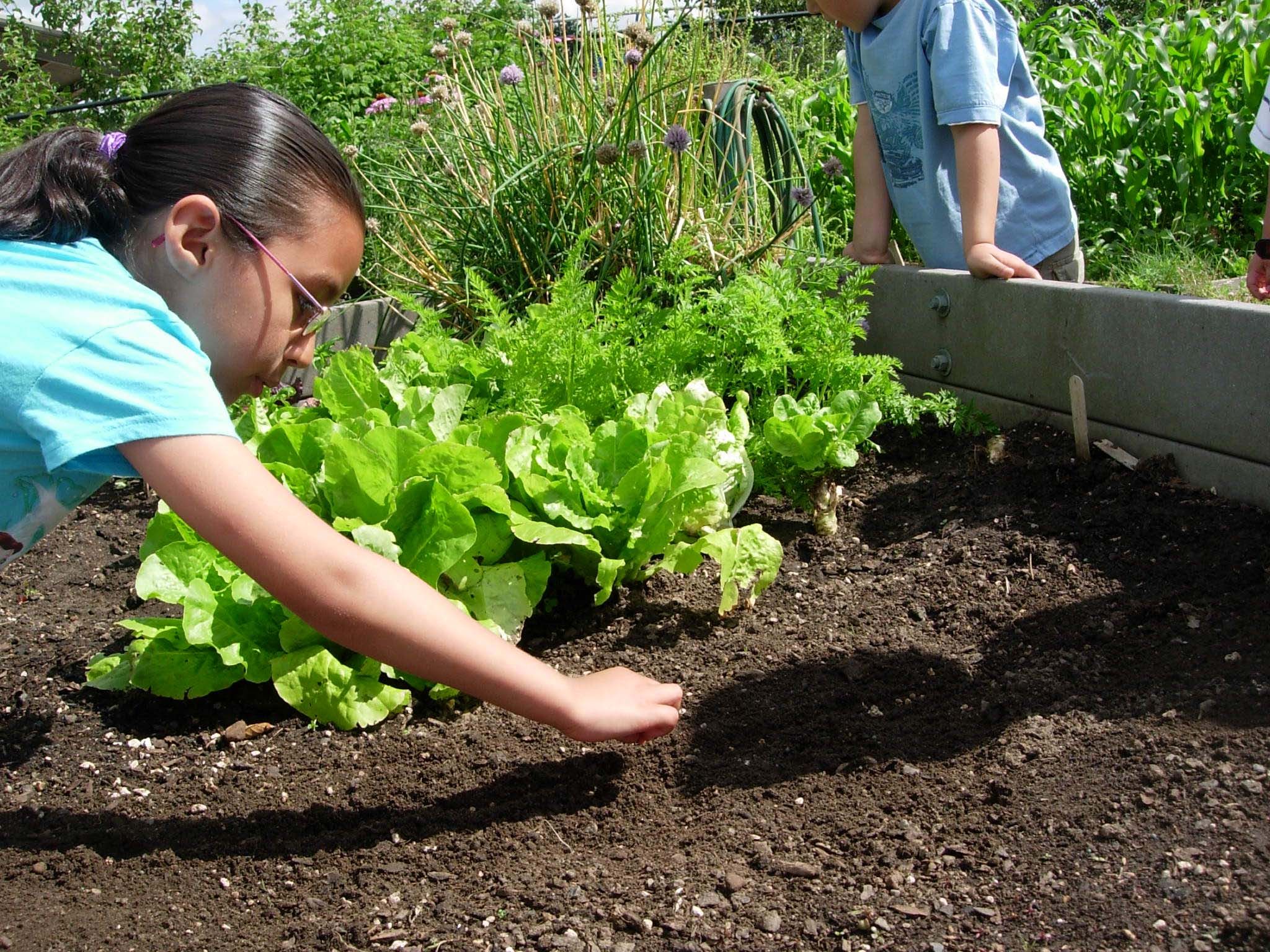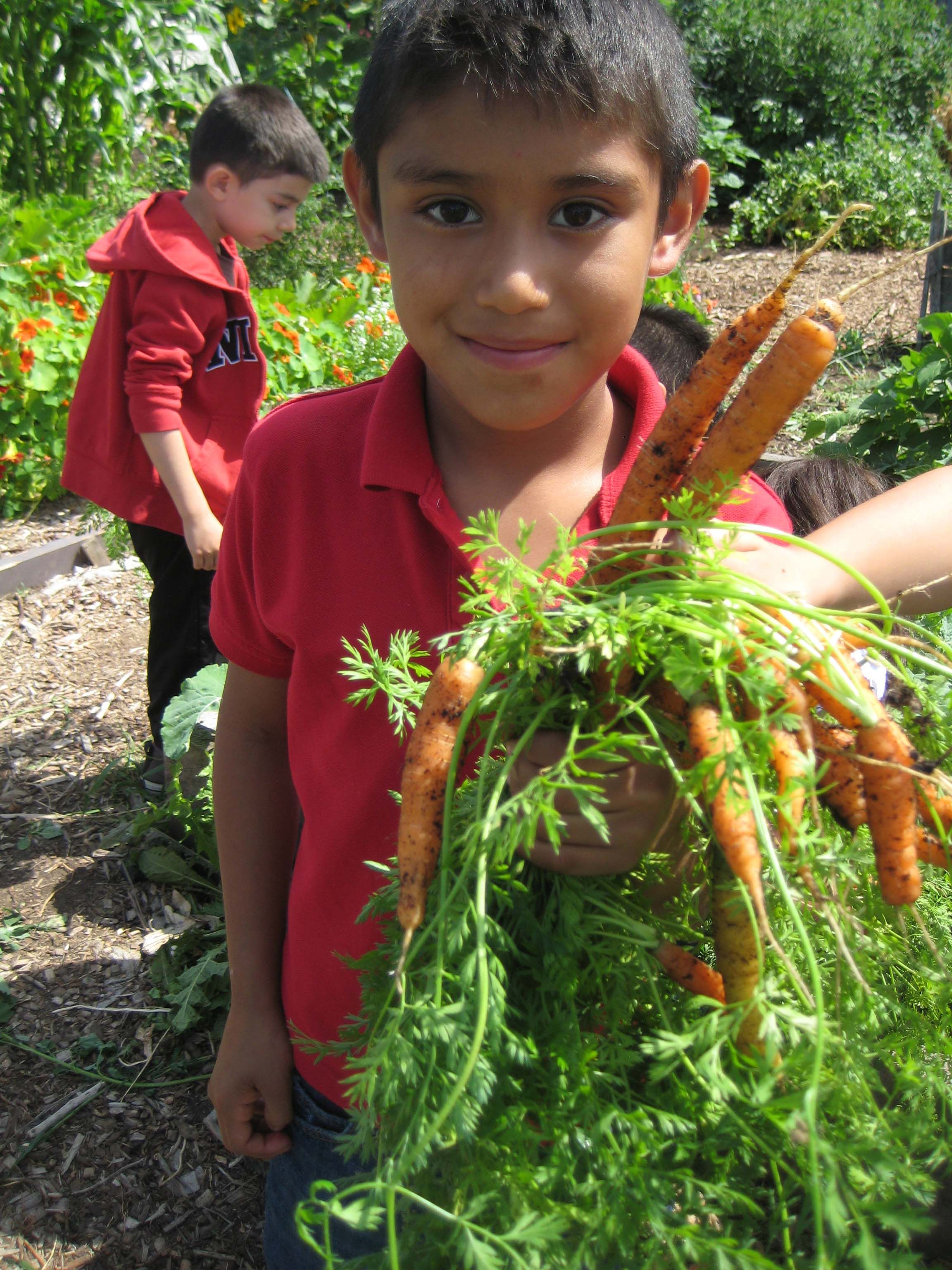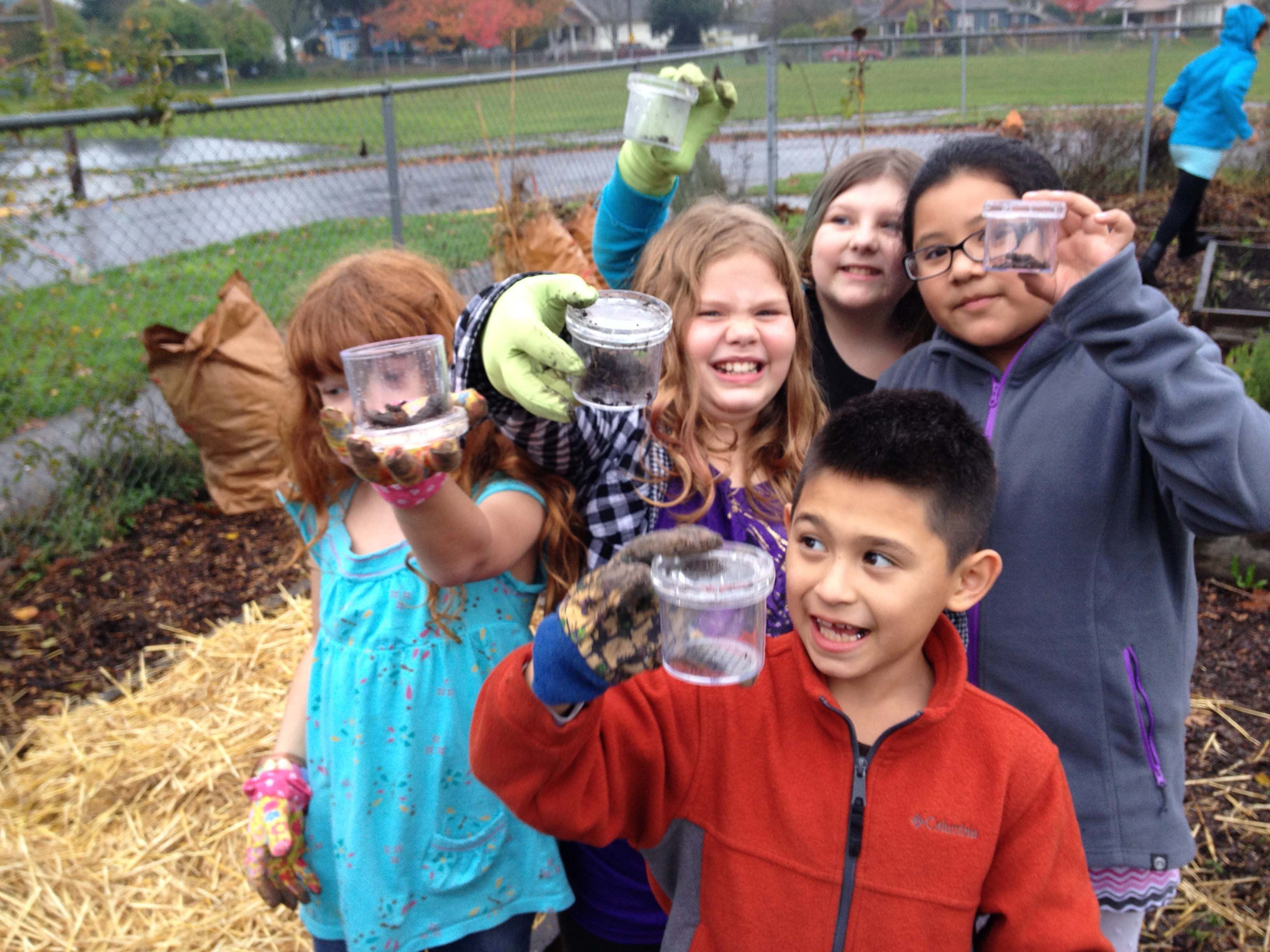Growing Gardens

A first grader eating beets? His mom couldn’t believe it, either. But “Carson,” who normally couldn’t still in class, was not only following the teacher’s lesson in the school garden, he was tasting foods his mom never dreamed he’d eat.
She was inspired. With training from Growing Gardens, which has helped people grow food in backyards and schoolyards since 1996, she started leading her own after-school garden club.
“School gardens have so much to offer,” says Caitlin Blethen, Youth Grow Manager at Growing Gardens. “The garden is right outside the door, so ideally kids can be having an outdoor experience throughout the day.”
Starting a school garden can be fairly easy—the challenge is keeping it going strong.
“In the first couple of years, people are excited to build something, but if there’s not a shared vision and plan, then you really see things tapering off after that.
”
That’s one thing Growing Gardens hopes to change. In 2009, the organization launched its School Garden Coordinator Certificate Training for teachers, parents and community members. With a grant from the Gray Family Foundation in 2012, they expanded the program from a few weekends to a weeklong summer course.
To date, they’ve trained more than 300 graduates to design a garden master plan, follow organic practices, get produce into cafeterias, craft lesson plans for students—and most importantly, gather broad-based community support to keep a garden growing strong. In many cases, graduates have raised money to start new gardens or become garden coordinators themselves.
Once established, a school garden becomes a prized community hub. And you can tell which kids helped with the harvest: They’re the ones who’ve loaded their lunch plates with greens.

